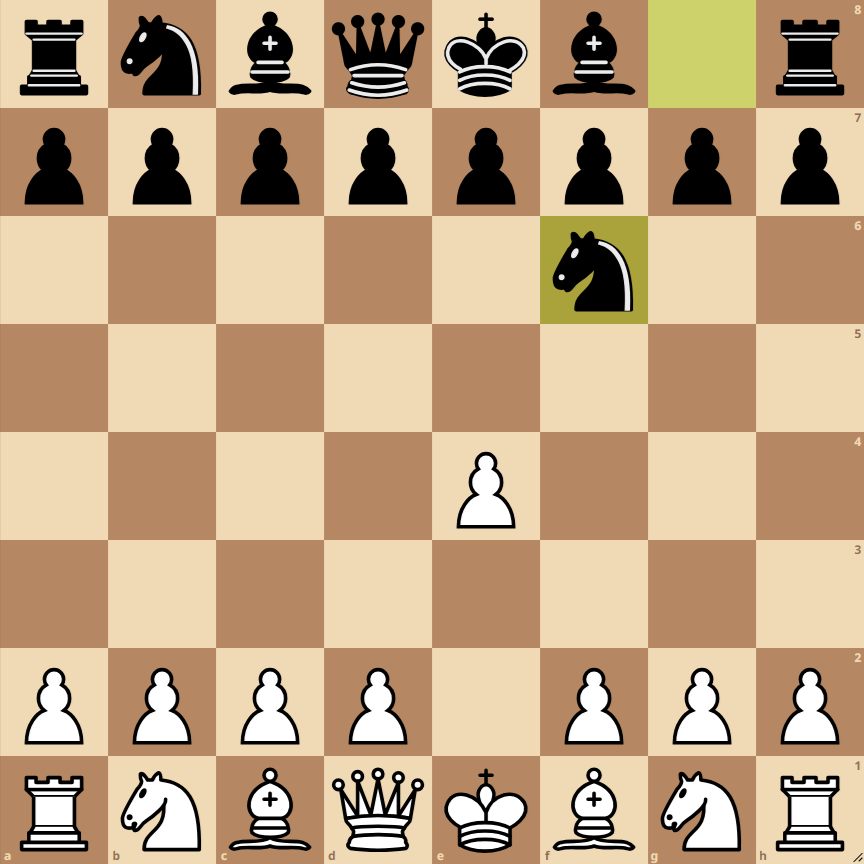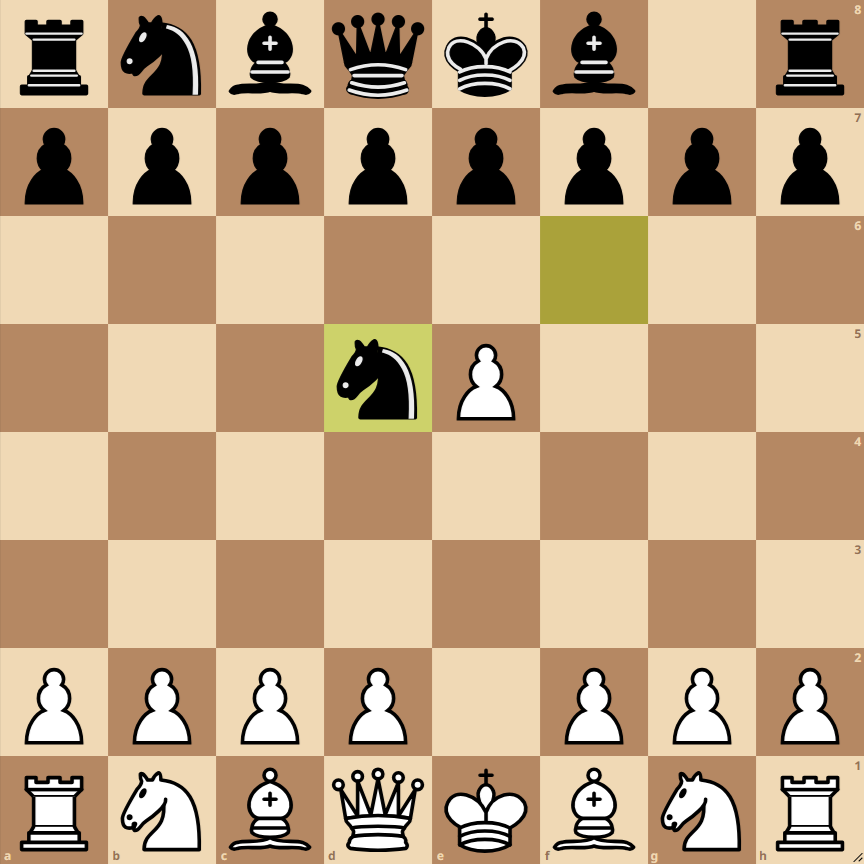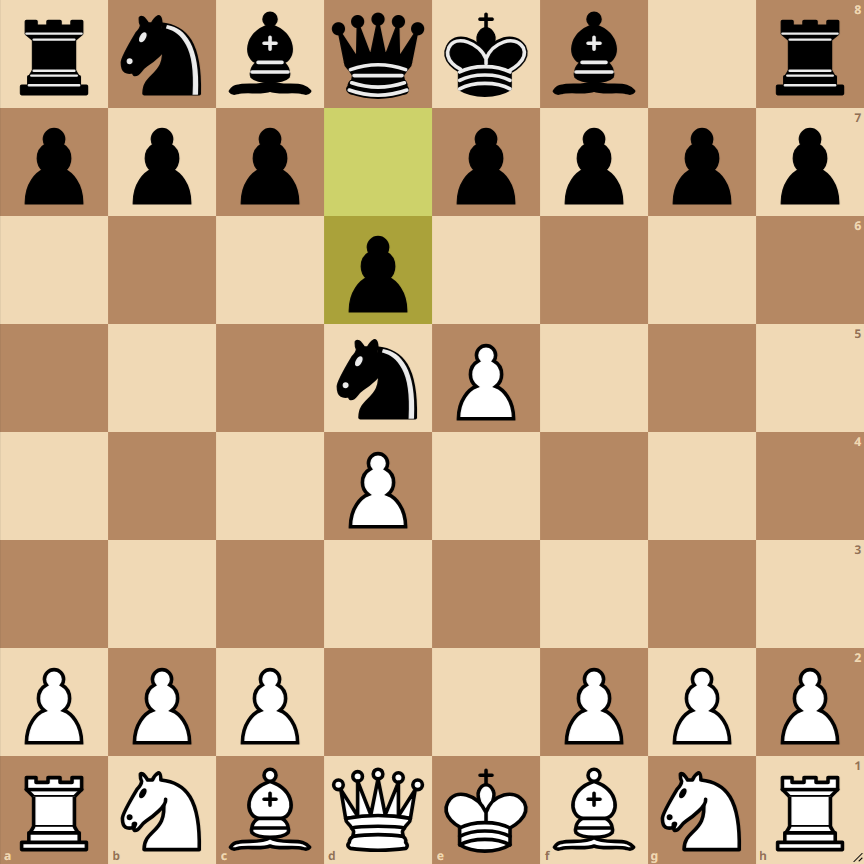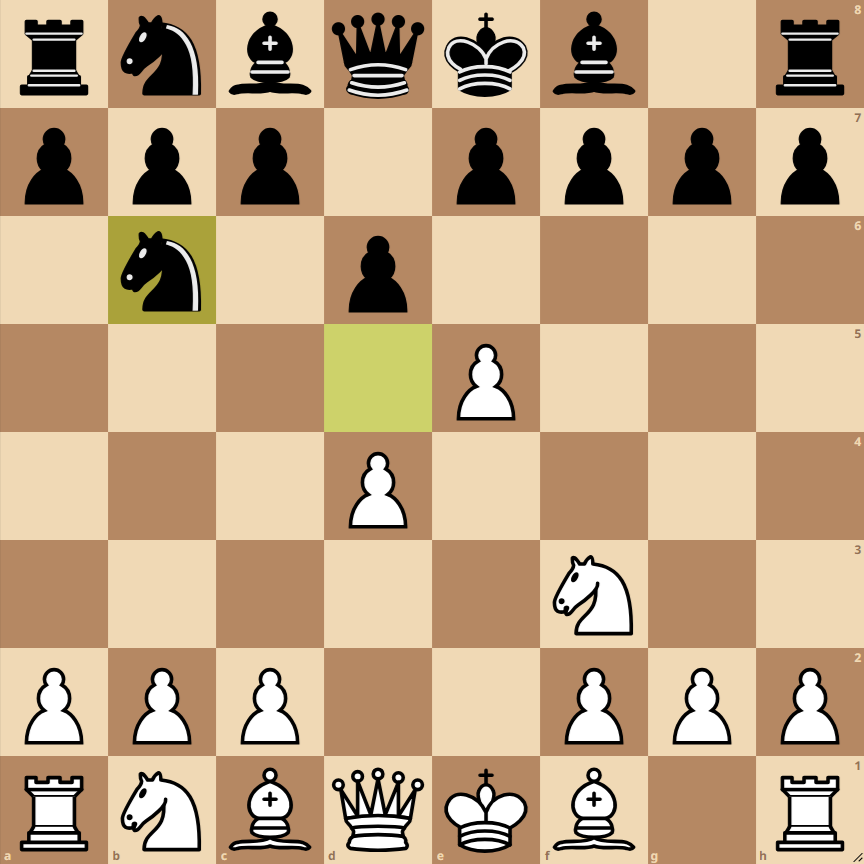How to Play the Alekhine Defense Modern Variation Schmid



- 1. e4 Nf6: White opens with the king’s pawn, controlling the center and preparing the development of their pieces. Black responds with the knight to f6, challenging the e4 pawn and signaling the Alekhine Defense.
- 2. e5 Nd5: White advances their e4 pawn to e5, attacking the knight on f6. The black knight moves to d5, seeking a more stable foothold.
- 3. d4 d6: White plays d4, strengthening their center and opening lines for the development of minor pieces. Black responds with d6, pressuring the advanced e5 pawn and aiming to free up space for their pieces.
- 4. Nf3 Nb6: White develops their knight to f3, targeting the center and preparing for castling. The black knight retreats to b6, a typical move in this variation aimed at reorganizing black’s pieces and counterattacking in the center.
Variations of the Alekhine Defense Modern Variation Schmid

Variation 4…Bg4
A popular alternative in this position is 4…Bg4, where black pins the knight on f3, creating pressure on the d4 pawn. This move seeks to increase tension in the center and prepare for a possible exchange of minor pieces.
Variation 4…g6
Another possibility for black is 4…g6, planning to fianchetto the bishop and control central squares along the long diagonal. This move aims for a more harmonious development of black’s pieces and prepares for long castling.

